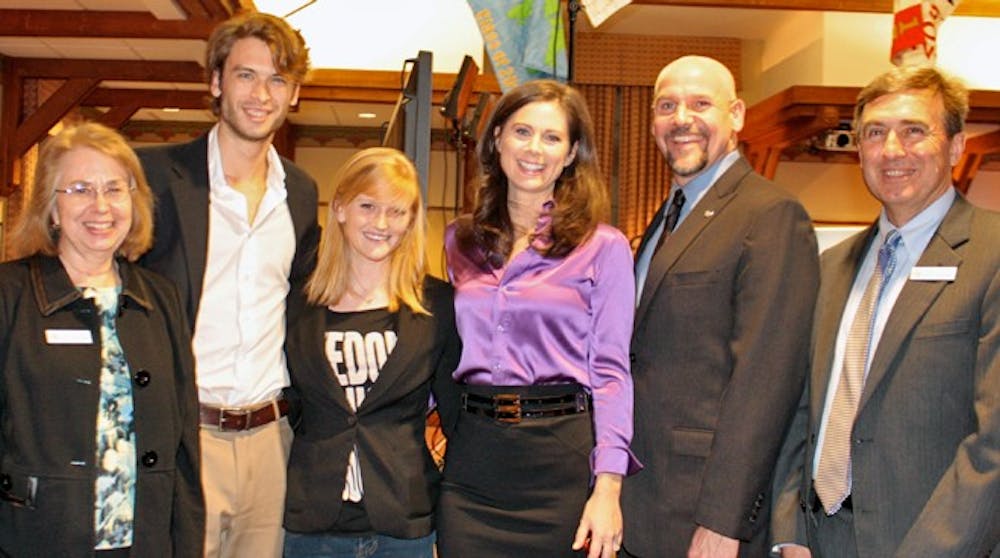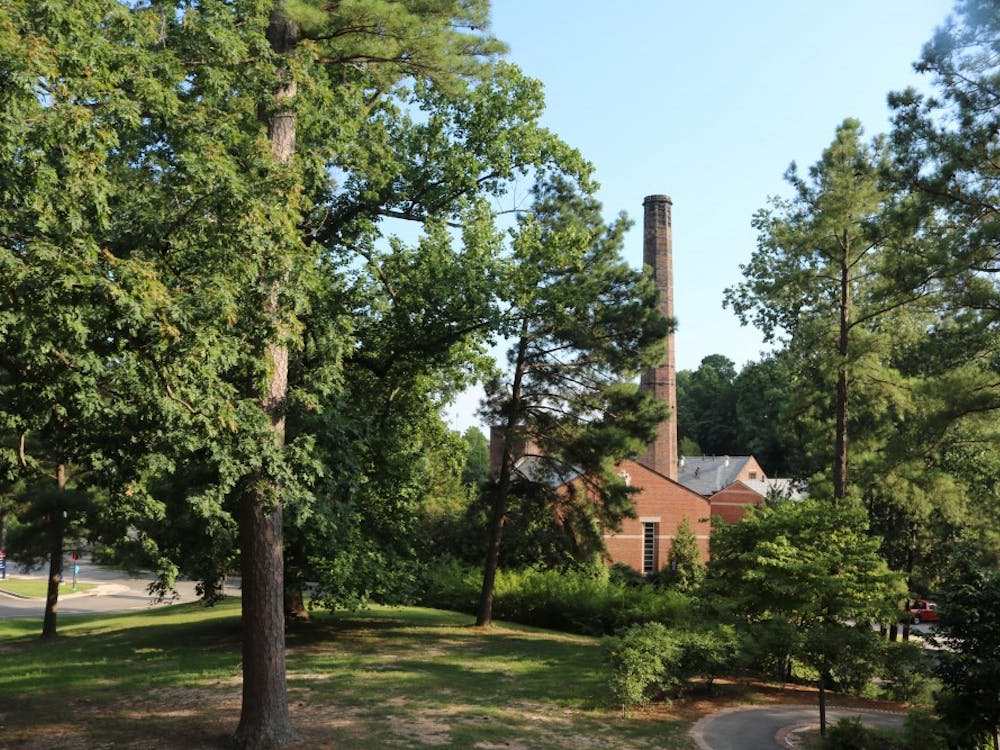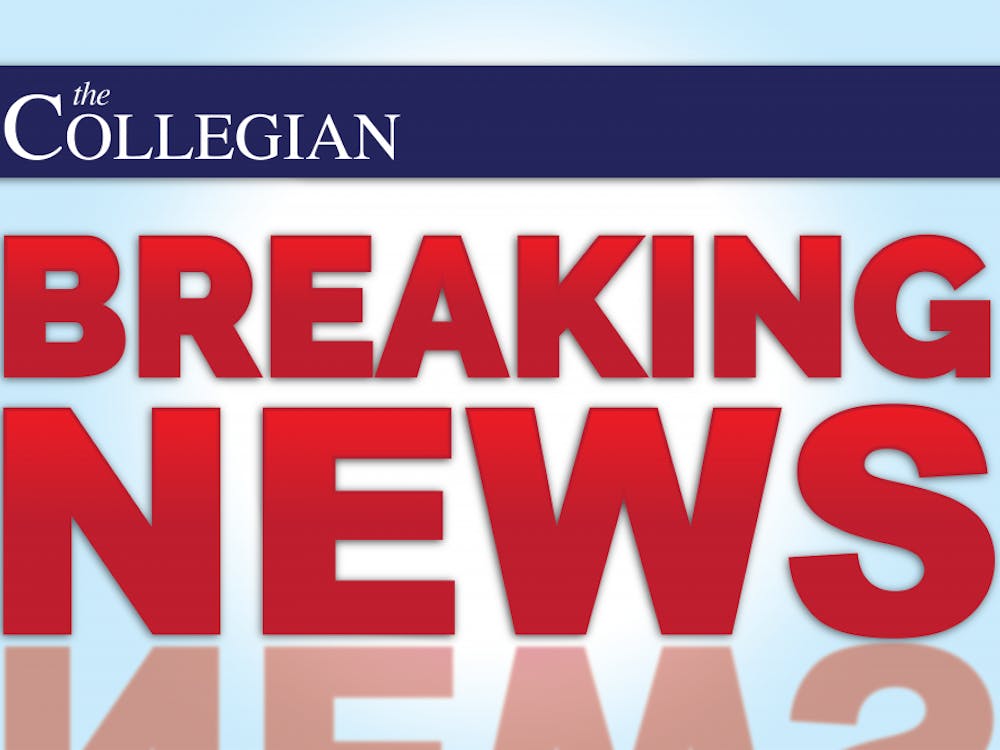CNN's live telecast from University of Richmond's Whitehurst Living Room Tuesday night gave the university its first national news spot for 2013.
CNN's production team, headed by senior producer Eric Fiegel, approached the university administrators last week about hosting a focus group of registered Va. voters in a live reaction to President Obama's State of the Union address. Richmond was chosen as a location because the production team tends to choose key battle ground states for its telecasts, Fiegel said.
After breaking news coverage concerning former Los Angeles police officer, Christopher Dorner, the national broadcast program switched to Washington, D.C., where Obama addressed the country at 9 p.m.
Although Obama spoke to the nation for an hour, the CNN production team and Richmond's media relations and events teams spent many hours before the telecast creating the set, testing equipment and double-checking logistics.
Some members of the 12-person CNN crew drove to Richmond from Washington, D.C., on Sunday, Feb. 10, Fiegel said. More teammembers and the satellite truck from the CNN headquarters in Atlanta, Ga., joined them on Monday. The team from Southern Methodist University in Dallas, Texas, which was in charge of finding and analyzing the participants, also arrived Monday, Fiegel said. Erin Burnett, CNN news anchor and host of Erin Burnett OutFront, joined the team Tuesday evening to report for the live telecast.
Fiegel and his team did about 10 live telecasts in 2012 for various debates, including all of the presidential debates, he said.
Leslie Bentz, CNN assignment editor in the newsroom, said that these telecasts had been very successful.
"It gives you a true sense of what the voters are thinking, and it's real-time data," she said. The CNN team collected its data through dial testing. Participants maneuvered handheld devices as they listened and reacted to the president's words, said Rita Kirk, a political communications professor from SMU and co-head of the dial analysis team. Kirk has been working with CNN for 10 years and frequently using the dial-testing system with the network since the first presidential debates in 2007, she said.
Dial testing pushes the participants to be active listeners, Kirk said, which has led to insightful opinions after a debate or speech. Her team included her partner and fellow SMU communications professor, Dan Schill, and their research assistant, SMU senior Caroline Booth. By working from voter registration lists, the dial analysis team compiled a group of 32 Richmond area participants who had voted in the last election, Booth said.
The participants were broken down by party affiliation, gender and race, Booth said. Dialing was processed during each second of the speech, Kirk said, which, for an hour-long speech, totals a minimum of 115,200 data points for the 32-person group.
After the State of the Union address and Sen. Marco Rubio's Republican response, CNN coverage cut to Burnett live in Richmond at 11:53 p.m. Her coverage from the Whitehurst Living Room opened with a show of hands of who thought the president had done a good job.
"The president got a lot of bipartisan support in this room," Burnett said. With instant data feedback from the dial testing, Burnett and the SMU team were able to analyze the participants' feedback on site, as well as send it back to Washington to create graphics for the CNN telecast, Fiegel said.
Enjoy what you're reading?
Signup for our newsletter
Burnett asked for viewer opinion on three prominent speech topics that received large viewer feedback: gun control, border control and the proposed minimum wage changes. There were 12 Democrats, 12 Independents and eight Republicans within the focus group, Burnett said.
The most positive feedback for Democrats was about gun control, Burnett said. An Independent participant said on camera that Obama had been able to capture the frustration of the nation concerning the current lack of sensible gun laws.
Republicans responded most positively when Obama spoke on border security, Burnett said.
Although the live telecast ended around midnight, the CNN and Richmond teams remained on site until 2:30 a.m. deconstructing the set and cleaning up, said Brian Eckert, director of Richmond media relations.
Fiegel said the university officials had been extremely helpful in preparing the set and that the facilities had been what they wanted.
Contact reporter Kylie McKenna at kylie.mckenna@richmond.edu
Support independent student media
You can make a tax-deductible donation by clicking the button below, which takes you to our secure PayPal account. The page is set up to receive contributions in whatever amount you designate. We look forward to using the money we raise to further our mission of providing honest and accurate information to students, faculty, staff, alumni and others in the general public.
Donate Now



